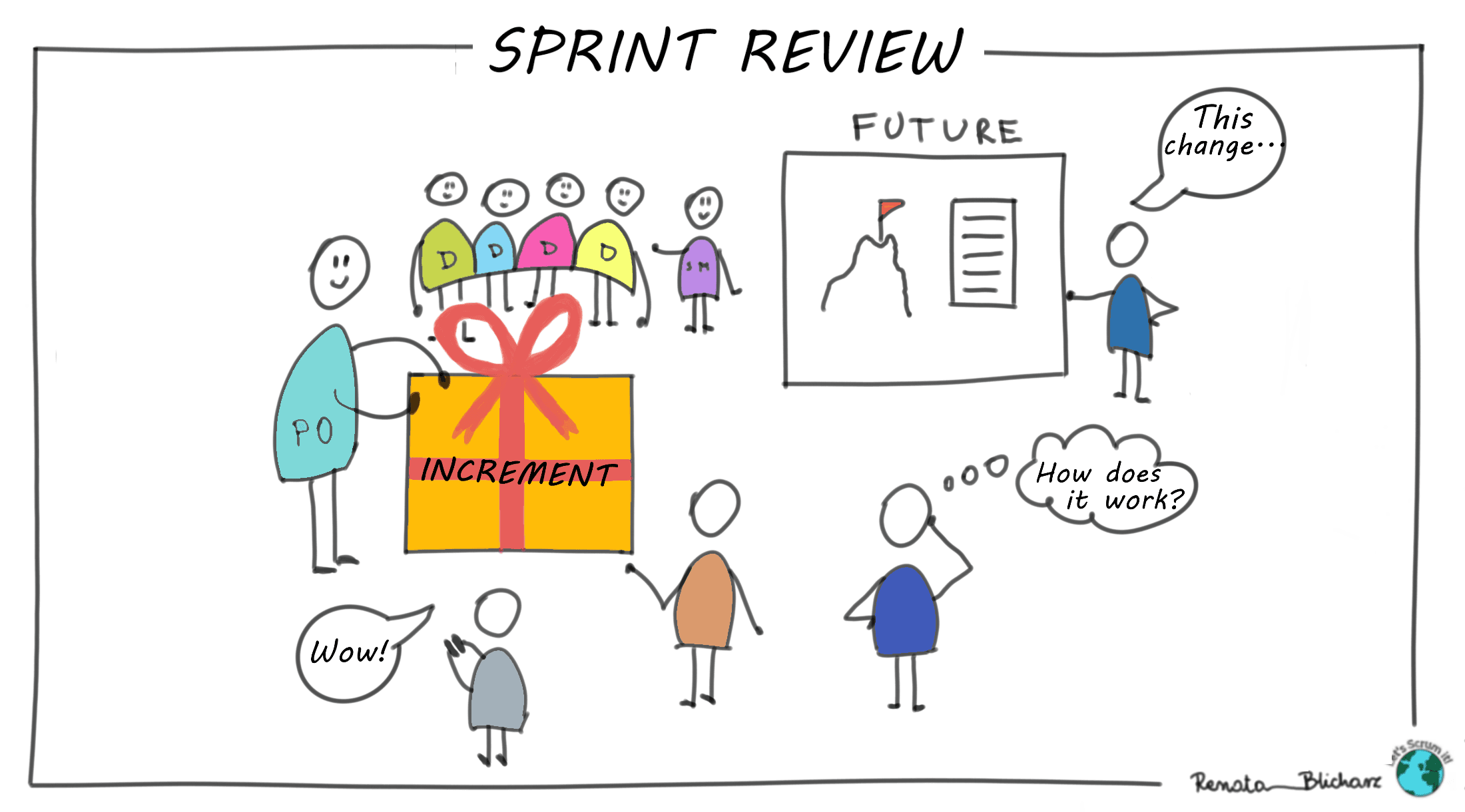
Scrum Events #4 Sprint Review
June 15, 2020 • 5 min to read
Are you at the end of the Sprint wondering what should happen next? It's time for Sprint Review meeting! Here you can find more details about it.
Table of Contents
Introduction
Few weeks ago I started a series of posts dedicated to Scrum Events.I’ve already described the Sprint, Sprint Planning and Daily Scrum. In this post I would like to tell you more about Sprint Review.
![]()
Definition and length
To understand the Sprint Review, we need to start from the definition in the Scrum Guide:
A Sprint Review is held at the end of the Sprint to inspect the Increment and adapt the Product Backlog if needed. During the Sprint Review, the Scrum Team and stakeholders collaborate about what was done in the Sprint.
Inspection and adaptation are two of the three pillars of Empiricism (third one is transparency) which is the foundation of the Scrum. In empirical process control, knowledge comes from experience and that’s exactly what is happening during the Sprint Review. Scrum Team together with all stakeholders inspect the increment and decide what should be done next.
Maximum duration of the Sprint Review is four hours for one-month Sprint. Scrum Master needs to make sure that event takes place and all attendees are aware of the purpose and keep time limits.
If we continue the analogy to running, Sprint Review is like the finishing line. It is the moment when we verify how fast we were running, celebrate success and then based on this we can plan our running techniques for the next race.
![]()
Collaboration
One of the most important parts of Agile mindset is collaboration - with clients, development team and business. In my post The Relationship between Scrum and Agile you can read more about Agile and why it is strictly related to Scrum.
Sprint Review is focused on the collaboration of all stakeholders and Scrum Team. In the traditional product development the final result/product is presented to stakeholders at the end of the project. If it is a complex product it can take months or even years.
In Scrum, Ken Schwaber and Jeff Sutherland proposed different approach:
Frequent delivery of the increment (not fully completed product).
Collecting the stakeholders’ feedback during development of the product.
Collaboration with all of them to optimize the value.
Collaboration with the customer is necessary to satisfy them and fulfill their needs. Moreover it saves a lot of Development Team’s time, because they know the direction of the development and they adjust their work if needed. I believe that this approach is much more effective and valuable than traditional development of the products.
![]()
Done & not Done work explained
Sprint Review is the time for the Product Owner to explain what has been "Done" during the Sprint and what has not been "Done". The Development Team should demonstrate "Done" work and answer all stakeholders’ questions about the increment. That’s the moment for stakeholders to play around with the product and check if all their needs and priorities are fulfilled.
It is important to mention that the Development Team should make sure that they present only "Done" work using the definition that they agreed for.
The Sprint Review event is also time for discussion about positive aspects of the Sprint (successes), issues that appeared and how they were solved. It can be a great opportunity to discuss communication between stakeholders and the Scrum Team and find the best solutions.
![]()
Product Backlog - now & the future
Product Owner presents the current status of the Product Backlog and gives the estimation of delivery based on the team velocity. It’s important to mention that it is just the prediction, not fixed dates. Specific plans for each Sprint are created by the Scrum Team during the Sprint Planning session.
All stakeholders and the Scrum Team should collaborate about priorities for the upcoming Sprint. They can be related to change in the marketplace or business strategy. It is important to analyze and decide what will deliver the maximum value to the business.
The outcome of the Sprint Review should be the revised Product Backlog that will include prioritized work items for the next Sprint. It will be used by the Scrum Team in the next Sprint Planning meeting.
![]()
Summary
The most important information about Sprint Review meeting:
The maximum duration of the meeting is 4 hours for one month Sprint.
Participants: Scrum Team and stakeholders invited by Product Owner.
Collaboration is a crucial part of the meeting. It is time for collection of feedback and understanding stakeholders’ needs.
The Product Owner should explain what was "Done" and not "Done" during the Sprint. - The Development Team demonstrates "Done" Increment.
It is also time for discussion about positive and negative aspects of the Sprint in order to create the best solution for the future.
During Sprint Review Product Backlog should be presented by the Product Owner with the estimated plan for the future.
All participants should collaborate to decide about work priorities and the direction for the next Sprint.
Sprint Review is a great tool for Scrum Team that helps to verify if stakeholders are happy about the increment and what is the most important work that needs to be included in the next iteration. This knowledge helps to plan the work and deliver business value.
Would you like to read more about education?
Sign up for the Newsletter & join Let's Scrum it community!